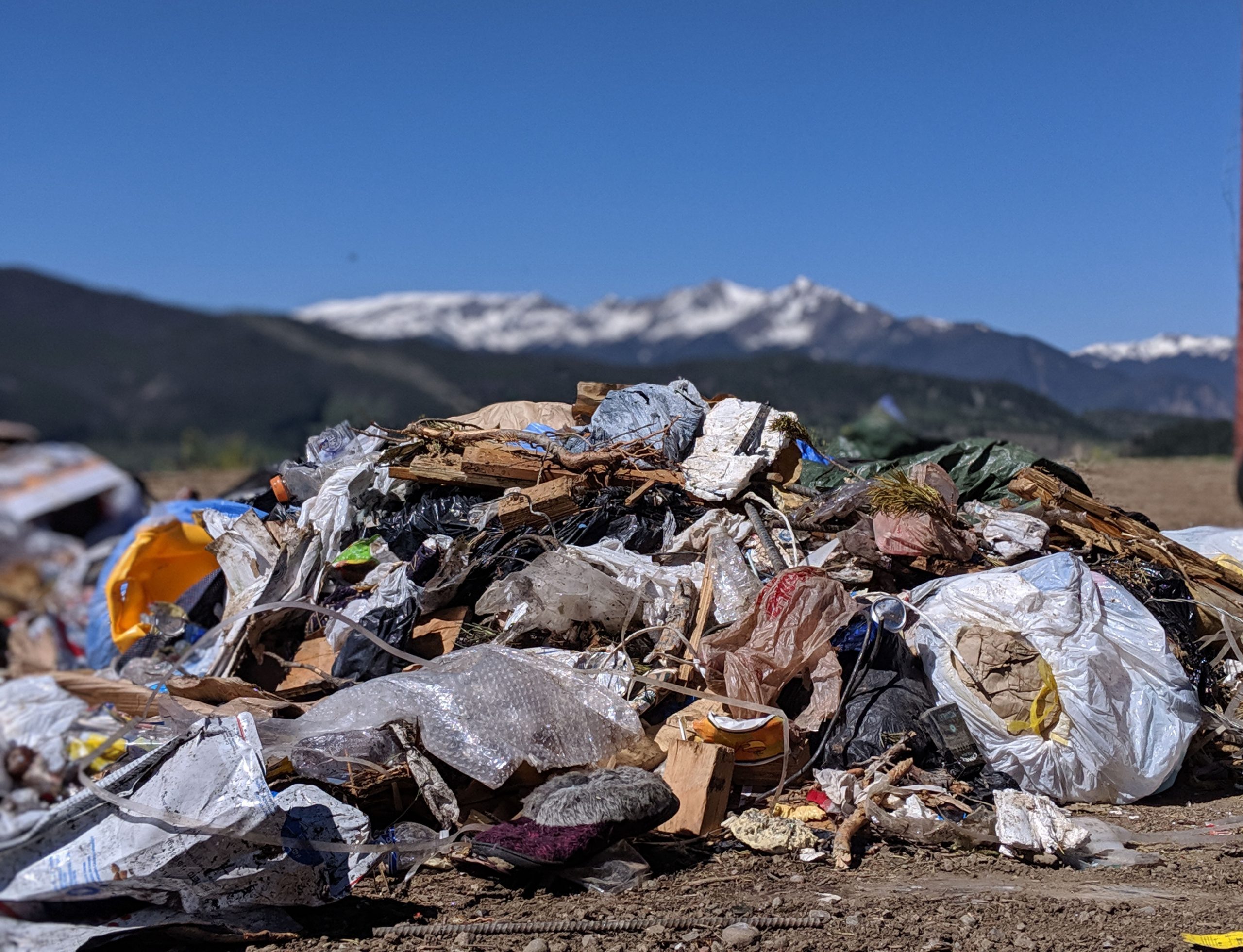
Dear Eartha, I have a friend who tells me I should compost my food waste. But doesn’t the food I throw away break down in the landfill anyway? – Maggie, Keystone
What an excellent question, Maggie! You’re not alone in thinking that it’s beneficial for items to break down in landfills. But what’s the truth? To find out the answer, let’s chat some landfill basics and what causes biodegradable materials to, well, biodegrade.
Landfill archaeology
Take a moment and imagine you’re a banana peel. Torn away from the fruit you once protected, you’ve just made your way to the local landfill. What happens next?
Trash isn’t spread across the entire landfill space all at once. Smaller openings, called cells, are filled one at a time. When garbage trucks arrive at the landfill, they empty their loads into the active cell. Space is a precious commodity in a landfill – the more space there is, the longer the landfill lasts! So to save as much space as possible, the trash is compacted by heavy machinery. And every day, it’s covered with a layer of soil.

You, bruised little banana peel, have had quite the day. A huge tractor has run back and forth over you so many times you’ve lost count; you’re squished by all the garbage around you. And now, you’re covered in a layer of soil. There’s not a lot of air, there’s certainly no sunlight, and there’s little moisture.
This is not an ideal environment for biodegradation, and that’s exactly how landfills are supposed to work. Landfills are designed to bury trash – not to break it down. In fact, excavations of landfills have uncovered newspapers still legible after 40 years, 25 year-old heads of lettuce in near pristine condition, and decades old packs of hot dogs ready for the grill.
Anaerobic vs. Aerobic Decomposition
Time for a little science lesson. Composting – the process of turning organic material into nutrient-rich soil – relies on aerobic decomposition. That means the little microbes that eat your food waste need oxygen to survive. Aerobic decomposition happens anywhere oxygen is present – on the forest floor, in a backyard compost pile, etc.
There’s not a lot of oxygen in a landfill, so if you’re throwing food away, it’s not turning into compost. However, there are little critters that don’t need oxygen to survive. These microbes do live in landfills, and when they decompose organic matter in landfills, they generate their own waste product – methane.

Methane, as you might know, is a greenhouse gas. In fact, it actually traps more heat than carbon dioxide! Methane doesn’t last as long in the atmosphere, which is why it’s not talked about as much as carbon dioxide, but it’s still a potent greenhouse gas. And landfills are the third largest human-related source of methane emissions in the United States – all those banana peels add up.
Now, you might be scratching your head and thinking, “I thought you said things don’t break down in a landfill.” You’re right – I did! Here’s the thing: While there is some decomposition, there’s not enough moisture in a landfill to completely break anything down. And even if there were, we wouldn’t want that to happen because the process would create more methane.
Beyond the banana
It’s not just food waste that won’t break down. Think of all the organic things you toss every day – paper towels, coffee cups, tissues, diapers, wooden toothbrushes. Assuming you recycle as much as possible (and you should), we all throw away items made of organic materials. The same goes for “bioplastics” – bags and “plastic” cups made out of corn starch and other plant-based ingredients. Truth is, these are stable in a landfill. You might feel better about buying them because they’re made from renewable resources, but don’t let yourself think that they’ll decompose in the landfill.
What does this mean for you, Maggie? Well, your friend is right…so thank her for giving you good advice! We should all keep our food waste out of the landfill. It makes no sense let food sit idle in a landfill for decades when instead it can be recycled into nutrient-rich compost.
No need to set up a backyard composting system – the High Country Conservation Center’s Food Scrap Recycling program offers convenient drop-off locations across the county. And good news! Thanks to new community funding, food scrap recycling will be free for residents beginning in August. Drop off up to 10 gallons a week and feel confident that your leftovers won’t be unearthed fifty years from now. For more information, check out HighCountryConservation.org.
